Newbery Award honoree and two-time Stonewall Award winner Kyle Lukoff here brings us an absolutely delightful, informative, and original picture book about an intriguing facet of LGBTQ history and a testament to queer community and resilience.
The titular question was sometimes “whispered in a crowded room”; other times “asked in private,” at a restaurant, or even at work, we read. Lukoff then cuts right to the main point, that “people always know how to find each other,” even when “it isn’t safe to be out as yourself.”
After hooking readers with that intriguing opening, Lukoff dives into the history, explaining that LGBTQ people used to have to hide their queer identities because of laws that made it illegal to be gay or lesbian or to wear clothes intended for a different gender. People could be fired, arrested, or hospitalized just for being LGBTQ. Queer people therefore came up with phrases and symbols to help them recognize each other, the book says. The question about Dorothy was one such phrase. While times were hard, queer people still found their communities, along with “love and fun and friendship.”
People who worked for the government or military were particularly at risk, though, and could be spied upon if they were suspected of being gay or lesbian. Entertainingly, Lukoff then tells of government spies who overheard sailors saying they were “friends of Dorothy,” and began an investigation to find the woman who could (clearly!) lead them to more gay men. Several pages show the officers on their fruitless quest, and Lukoff uses the opportunity to share a couple of theories about the origins of the phrase. He then speculates about what happened when someone finally clued in the investigators—while the illustrations show the officers looking disgruntled and a group of sailors having a good laugh.
The final pages explore the many ways that things have improved for LGBTQ people in the U.S. since that time—and the challenges that remain, including discrimination, fears for safety, and anti-trans laws. Despite the obstacles, LGBTQ people still find our community and still work to keep each other safe, the book concludes. “And learning about the ways we survived in the past could help people in the future.”
The book is both well-executed and timely—perhaps even more timely than it was when Lukoff must have started to write it. Yes, it deals with some difficult topics. But avoiding the discussion of difficult topics with our children is a privilege many of us parents in marginalized communities don’t have. Lukoff balances the discussion of challenges and hardships, however, by also telling of the joy and strength in queer community—a joy reflected in Levi Hasting’s pitch-perfect, slightly retro illustrations.
An afterward explains a little more about the terms that describe LGBTQ identities and how those terms are ever evolving.
Highly recommended and more necessary than ever.











